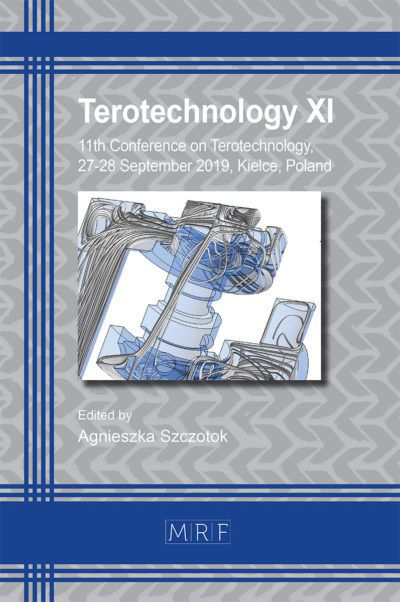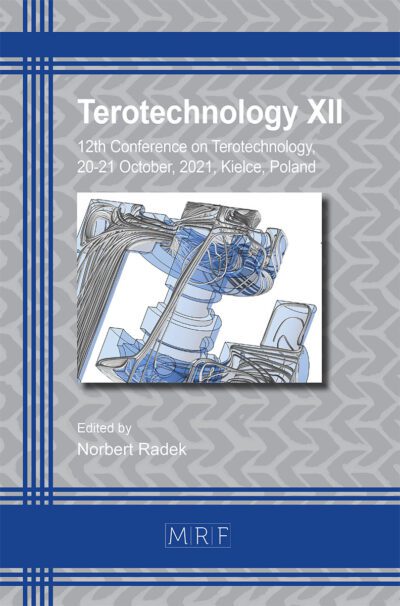Numerical simulation and experimental trials on superplastic forming for thin-walled structure of Ti2AINb alloy
Ning Zhang,Yaoqi Wang, Yanhong Mu, Zhen Li
download PDFAbstract. The difficult formability of Ti2AlNb alloy leads to the difficulty of traditional manufacturing methods to form the complex thin-walled components, limiting the wide application of Ti2AlNb alloy in aerospace. In this paper the superplastic forming process of Ti2AINb alloy with thin-walled structure was studied. The superplastic tensile tests of Ti2AINb alloy were carried out at varying temperature ranging from 920℃ to 980℃ and strain rate ranging from 0.001s-1 to 0.03s-1. The effect of the deformation-temperature and strain rate on the superplastic deformation behaviour was analysed, showing that the flow stress and elongation increase with the increasing temperature and the flow stress decreases, the elongation increases with the decrease of the strain rate. The elongation reaches the maximum value of 525% at the temperature of 940℃ and the strain rate of 0.001s-1. The constitutive equation taking into account the effect of strain was developed, which was implemented into the FE-based software Abaqus to simulate the superplastic forming of the thin-walled structure. The optimal values of the slab thickness and loading pressure-time curve were obtained by simulation and the superplastic forming tests of thin-walled structure were performed. The comparison between the numerical and experimental data with regard to thickness variation verified the accuracy of the finite element model. The research results provide a reference basis for the preparation of complex thin-walled structures of Ti2AINb alloy in aerospace.
Keywords
Ti2AINb Alloy, Superplastic Forming, Constitutive Equation, Numerical Simulation
Published online , 8 pages
Copyright © 2023 by the author(s)
Published under license by Materials Research Forum LLC., Millersville PA, USA
Citation: Ning Zhang,Yaoqi Wang, Yanhong Mu, Zhen Li, Numerical simulation and experimental trials on superplastic forming for thin-walled structure of Ti2AINb alloy, Materials Research Proceedings, Vol. 32, pp 87-94, 2023
DOI: https://doi.org/10.21741/9781644902615-9
The article was published as article 9 of the book Superplasticity in Advanced Materials
![]() Content from this work may be used under the terms of the Creative Commons Attribution 3.0 license. Any further distribution of this work must maintain attribution to the author(s) and the title of the work, journal citation and DOI.
Content from this work may be used under the terms of the Creative Commons Attribution 3.0 license. Any further distribution of this work must maintain attribution to the author(s) and the title of the work, journal citation and DOI.
References
[1] T.A. Barber, J. Majdalani, B.A. Maicke. Review of gaps, obstacles, and technological challenges in hypersonic applications, International Journal of Energetic Materials and Chemical Propulsion, 2018, 17(1): pp. 13-55. https://doi.org/10.1615/IntJEnergeticMaterialsChemProp.2018022006
[2] H.Y. Huang, L.J. Su, C.S. Lei, LI Jian, E.S. Zhang, W.J. Li, J.Y. Yang, Y.M. Zhao, Y.C. Pei, H. Zhang. Reusable thermal protective materials:application and research progress, Acta Aeronauticaet Astronautica Sinica, 2020, 41(12): pp. 023716-1- 023716-35.
[3] X. Ma, J.W. Zhang, X.B. Liang, Z.W. Zeng. Microstructure and mechanical properties of Ti-22Al-25Nb alloy during hot mechanical processing, Rare Metal Materials and Engineering,2017, 46(5): pp. 1375-1379.
[4] J. Kumpfert. Intermetallic alloys based on orthorhombic titanium aluminide, Advanced Engineering Materials, 2001, 3(11): pp. 851-864. https://doi.org/10.1002/1527-2648(200111)3:11<851::AID-ADEM851>3.0.CO;2-G
[5] Y.P. Zheng, W.D. Zeng, D. Li, X.B. Liang, J.W. Zhang, X. Ma. Effect of orthorhombic case on the creep rupture of Ti-22Al-25Nb (at.%) orthorhombic alloy, Materials Science and Engineering A, 2017, 696: pp. 529-535. https://doi.org/10.1016/j.msea.2017.05.003
[6] S.H. Huang, B. Shao, W.C. Xu, D.B. Shan, B. Guo, Y.Y. Zong. Deformation behavior and dynamic recrystallization of Ti-22Al-25Nb alloy at 750~990℃, Advanced Engineering Materials,2020, 22(4): pp. 1-8. https://doi.org/10.1002/adem.201901231
[7] L. Carrino, V. Paradiso, S. Franchitti, A. Squillace, S. Russo. Superplastic forming/diffusion bonding of a titanium alloy for the realization of an aircraft structural component in multi-sheets configuration, Key Engineering Materials, 2012, 504-506: pp. 717-722. https://doi.org/10.4028/www.scientific.net/KEM.504-506.717
[8] G. Liu, Y. Wu, J. Zhao, K. Wang, S.J. Yuan. Formability determination of titanium alloy tube for high pressure pneumatic forming at elevated temperature, Procedia Engineering, 2014, 81: pp. 2243-2248. https://doi.org/10.1016/j.proeng.2014.10.315
[9] S.M.R. Tabatabaei, M. Safari, R.S. Esfahani, A.A. Sichani, M.N.P. Moghadam. Experimental and numerical investigation of cold bulge forming of titanium alloy Ti55, World Journal of Mechanics, 2013(9): pp. 323-327. https://doi.org/10.4236/wjm.2013.39035
[10] J.L. Ma, Y.S. Liu, P. Li, K.M. Xue. The influence of temperature for thickness distribution of Ti2AlNb alloy sheet formed by superplastic free bulging, Journal of Harbin Institute of Technology, 2016, 48(5): pp. 172-176.
[11] Z.F. Zhou, M.H. Chen, D.G. Wang, N. Wang. Superplastic forming and diffusion bonding numerical simulation for core sheets of TC4 titanium alloy rudder, Hot Working Technology, 2014, 43(3): pp. 190-195.














